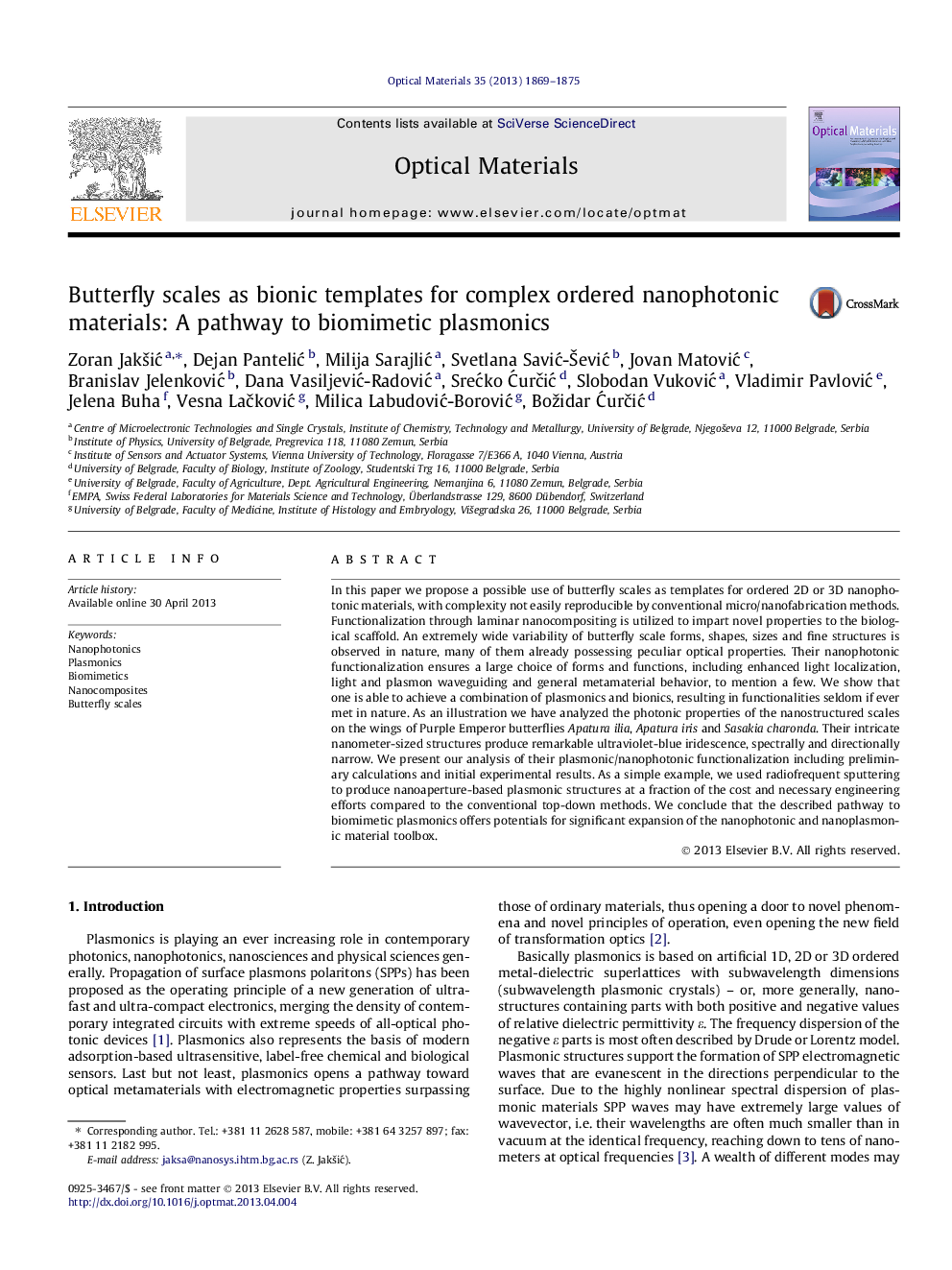| Article ID | Journal | Published Year | Pages | File Type |
|---|---|---|---|---|
| 1495198 | Optical Materials | 2013 | 7 Pages |
•The use of butterfly scales as scaffolds for nanophotonic materials is considered.•A pathway to biomimetic plasmonics is proposed.•Nanostructured scales on the wings of purple emperor butterflies are analyzed.•Functionalization through laminar nanocompositing is done by RF sputtering.•Biomimetic spoof plasmon/extraordinary optical transmission arrays are described.
In this paper we propose a possible use of butterfly scales as templates for ordered 2D or 3D nanophotonic materials, with complexity not easily reproducible by conventional micro/nanofabrication methods. Functionalization through laminar nanocompositing is utilized to impart novel properties to the biological scaffold. An extremely wide variability of butterfly scale forms, shapes, sizes and fine structures is observed in nature, many of them already possessing peculiar optical properties. Their nanophotonic functionalization ensures a large choice of forms and functions, including enhanced light localization, light and plasmon waveguiding and general metamaterial behavior, to mention a few. We show that one is able to achieve a combination of plasmonics and bionics, resulting in functionalities seldom if ever met in nature. As an illustration we have analyzed the photonic properties of the nanostructured scales on the wings of Purple Emperor butterflies Apatura ilia, Apatura iris and Sasakia charonda. Their intricate nanometer-sized structures produce remarkable ultraviolet-blue iridescence, spectrally and directionally narrow. We present our analysis of their plasmonic/nanophotonic functionalization including preliminary calculations and initial experimental results. As a simple example, we used radiofrequent sputtering to produce nanoaperture-based plasmonic structures at a fraction of the cost and necessary engineering efforts compared to the conventional top-down methods. We conclude that the described pathway to biomimetic plasmonics offers potentials for significant expansion of the nanophotonic and nanoplasmonic material toolbox.
